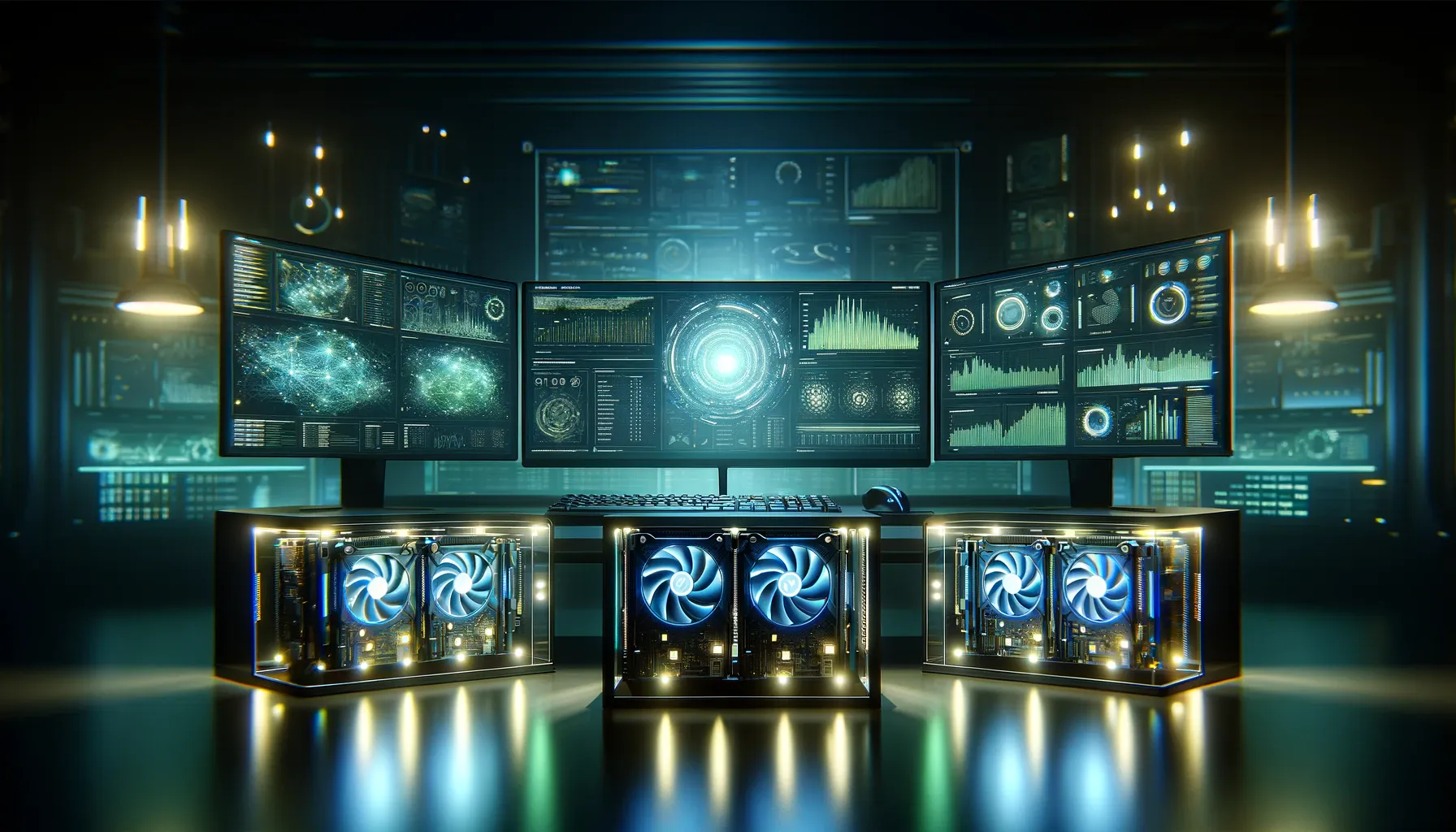Table of Contents
In today’s data-driven world, organizations are constantly seeking ways to gain a competitive edge through faster and more efficient data analysis. Traditional CPU-based data analytics solutions are often unable to keep up with the increasing volume and complexity of data generated by modern businesses. Enter GPU Accelerated Data Analytics – a game-changing technology that is revolutionizing the way organizations process and analyze their data. In this article, we will explore the world of GPU Accelerated Data Analytics, exploring what it is, how it works, and the remarkable benefits it brings to the table.
What is GPU Accelerated Data Analytics?
GPU Accelerated Data Analytics is a powerful approach that harnesses the capabilities of Graphics Processing Units (GPUs) to expedite the data analysis process. Originally designed for rendering graphics and managing parallel tasks in gaming and graphics-intensive applications, GPUs have proven to be exceptionally proficient at handling vast amounts of data in parallel. This parallel processing ability is what makes GPUs the preferred choice for GPU Accelerated Data Analytics.
In traditional data analytics, tasks were primarily executed on Central Processing Units (CPUs), which are engineered for general-purpose computing. While CPUs are versatile and can handle a wide range of tasks, they are not optimized for the specific parallel processing requirements of modern data analytics. This is where GPUs shine, providing a significant performance boost by executing numerous calculations simultaneously.
In essence, GPU Accelerated Data Analytics capitalizes on the parallel processing power of GPUs to expedite data analysis tasks that would otherwise be time-consuming on traditional CPUs. This approach is particularly valuable for tasks involving large datasets and complex calculations, offering a substantial enhancement in efficiency and speed.
Let’s explore a few illustrations to illustrate the transformative power of GPU Accelerated Data Analytics:
Financial Analysis: In the world of finance, timely insights can make or break investment decisions. GPU Accelerated Data Analytics can process vast volumes of financial data, such as market tick data, historical stock prices, and economic indicators, in real-time. This enables traders and analysts to identify trends, anomalies, and trading opportunities with unprecedented speed, giving them a significant competitive advantage.
Healthcare: Healthcare organizations deal with enormous volumes of patient data, including electronic health records, medical images, and genomics data. GPUs can accelerate tasks such as image recognition, genomic sequencing, and predictive modeling, leading to faster diagnosis, treatment, and research advancements. For illustration, researchers can analyze genomic data to identify potential genetic markers for diseases more quickly, potentially leading to breakthroughs in personalized medicine.

E-commerce: Online retailers face the challenge of processing and analyzing customer data in real-time to offer personalized recommendations and optimize pricing strategies. It can process user behavior data, transaction histories, and website interactions swiftly, allowing e-commerce platforms to provide tailored product suggestions, improve user experience, and boost conversion rates.
Energy Sector: The energy industry relies on data analytics to optimize resource allocation, monitor equipment health, and predict maintenance needs. GPU acceleration can process sensor data from oil rigs, power plants, and renewable energy sources, enabling energy companies to make informed decisions, reduce downtime, and enhance operational efficiency.
How GPU Accelerated Data Analytics Works
GPU Accelerated Data Analytics refers to the use of Graphics Processing Units (GPUs) to accelerate data analysis tasks. Let’s explore deeper into the key components and processes involved in this approach:
Data Preparation: In the initial phase of this, data preparation remains a crucial step. This involves tasks such as data collection, cleaning, and transformation to make the raw data suitable for analysis. While GPUs are primarily known for their computational prowess, they don’t significantly impact this phase, as they mainly deal with data preprocessing and formatting, which is typically CPU-bound.
Data Analysis: Here is where GPU Accelerated Data Analytics truly shines. During data analysis, the CPU sends instructions to the GPU, which takes over and performs the computations in parallel. GPUs are specifically designed with thousands of small cores, each capable of executing its calculations concurrently. This parallel processing power is a game-changer, enabling the GPU to process vast datasets and complex calculations at incredible speeds.

Results Retrieval: Once the data analysis is complete, the results are retrieved from the GPU. This can be presented to the user in real-time or stored for further analysis and decision-making. The ability to retrieve results rapidly is a significant advantage of GPU Accelerated Data Analytics, as it dramatically reduces the time required to gain insights from the data, which is critical for time-sensitive applications and decision support.
Benefits of GPU Accelerated Data Analytics
Speed and Efficiency: It offers remarkable speed and efficiency compared to traditional CPU-based methods. It allows tasks that would normally take hours or even days to complete on a CPU to be accomplished in just minutes or seconds. This rapid acceleration empowers organizations to make faster decisions and respond swiftly to changing business conditions. For instance, a retail company can utilize GPU Accelerated Data Analytics to analyze customer purchase data in real time, providing personalized product recommendations to customers while they are still browsing the website.
Scalability: GPUs are highly scalable, which means organizations can easily expand their GPU infrastructure to meet growing data analysis needs. This scalability ensures that businesses can process and analyze larger volumes of data without major disruptions or delays. For instance, a financial institution can scale up its GPU infrastructure to handle the increasing demands of fraud detection as the number of transactions on its platform grows.
Cost-Effectiveness: Despite the initial investment, GPUs prove to be highly cost-effective in the long run. Their speed and efficiency lead to substantial cost savings by reducing the time and resources required for analysis. Consider a healthcare provider that employs GPU Accelerated Data Analytics to process medical imaging data faster, reducing patient waiting times for diagnostic procedures and ultimately lowering operational costs.
Complex Analysis: It excels in handling complex analytical tasks that were previously impractical due to the immense time and computational resources required. This capability opens up new possibilities for organizations to extract valuable insights from their data. For instance, an automotive manufacturer can utilize GPU Accelerated Data Analytics to simulate and analyze the performance of various vehicle design configurations, resulting in more fuel-efficient and safer vehicles.
Real-Time Analytics: GPUs enable organizations to perform real-time analytics, facilitating data-driven decisions as events unfold. This capability is particularly valuable in industries such as finance, e-commerce, and cybersecurity. An online gaming platform, for instance, can leverage GPU Accelerated Data Analytics to detect and respond to fraudulent activities in real time, ensuring a fair and secure gaming experience for users.

Challenges and Considerations
GPU Accelerated Data Analytics can provide significant advantages for organizations looking to process and analyze large volumes of data quickly and efficiently. However, certain challenges and considerations need to be addressed when implementing this technology.
Specialized Hardware: To harness the benefits of GPU acceleration, organizations must invest in GPUs or GPU-equipped servers. While the cost of GPUs has decreased over time, it still represents an upfront investment that may require budget allocation and planning.
Skill Requirements: Developing or optimizing software to leverage GPU acceleration often demands specialized skills and expertise in GPU programming. Organizations should be prepared to either train their existing workforce or hire professionals with the necessary knowledge to effectively utilize GPUs.
Compatibility: Not all analytics tools and software readily support GPU acceleration. Organizations must assess their existing analytics ecosystem and determine whether their chosen tools are GPU-compatible. This might involve evaluating and selecting the right analytics software or considering custom development to fully exploit GPU acceleration capabilities.
Data Transfer Bottlenecks: While GPUs excel at computation, the process of moving data to and from the GPU can sometimes become a bottleneck. To ensure maximum GPU acceleration benefits, organizations need to implement efficient data transfer mechanisms. This might involve optimizing data loading processes, utilizing high-speed interfaces, or employing data compression techniques to minimize data transfer overhead.
Unlocking Data Insights with GPU Accelerated Data Analytics
In today’s rapidly evolving world, organizations are experiencing a data explosion like never before. The volume and complexity of data continue to grow, presenting both challenges and opportunities. However, with the advent of GPU Accelerated Data Analytics, a revolutionary technology, organizations can revolutionize the way they process, analyze, and derive insights from their data.

It also leverages the unparalleled speed and efficiency of Graphics Processing Units (GPUs) to turbocharge data processing and analysis. This technology is not just a game-changer; it’s a competitive advantage that can transform industries across the board.
In finance, GPU Accelerated Data Analytics enables high-frequency trading, risk assessment, and fraud detection with lightning speed, giving organizations the edge they need in the dynamic world of finance. In healthcare, it accelerates medical imaging analysis, drug discovery, and patient data management, potentially saving lives and improving patient care. In e-commerce, it enhances recommendation systems, customer segmentation, and demand forecasting, driving sales and customer satisfaction. Even in the energy sector, GPU acceleration can optimize energy production, grid management, and predictive maintenance, contributing to sustainability and cost efficiency.
As organizations grapple with the ever-growing data challenges, it emerges as a critical technology to stay ahead. It’s a catalyst for making more informed decisions, gaining a competitive edge, and unlocking new possibilities across various industries.
In conclusion, organizations must embrace this transformative technology and harness the full potential of their data. It is not just a trend; it’s a revolution that empowers businesses to thrive in the fast-paced, data-driven landscape of today and tomorrow.





